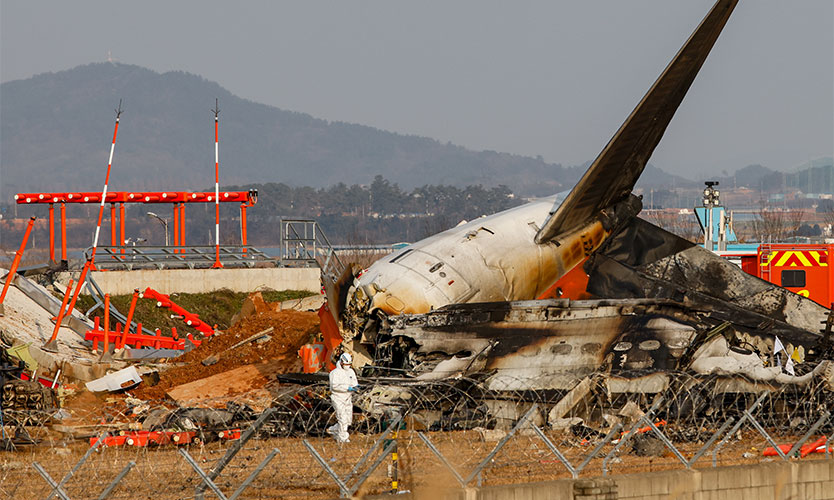South Korea orders airline safety probe after crash
- October 9, 2025
- Posted by: Web workers
- Category: Finance

(Reuters) — South Korea acting President Choi Sang-mok Monday ordered an emergency safety inspection of the country’s entire airline operation as investigators worked to identify victims and find out what caused the deadliest air disaster on South Korean soil.
All 175 passengers and four of the six crew were killed when a Jeju Air Boeing 737-800 belly-landed and skidded off the end of the runway at Muan International Airport, erupting in a fireball as it slammed into a wall. Two crew members were pulled out alive.
The aviation insurance industry could be looking at a claim for about $15 million to $20 million under the airline hull insurance policy, and total passenger liability claims of $120 million to $180 million due to the crash, according to Marcos Alvarez, managing director of global insurance ratings at Morningstar DBRS.
The top priority for now is identifying the victims, supporting their families and treating the two survivors, Mr. Choi told a disaster management meeting in Seoul.
“Even before the final results are out, we ask that officials transparently disclose the accident investigation process and promptly inform the bereaved families,” he said.
“As soon as the accident recovery is conducted, the transport ministry is requested to conduct an emergency safety inspection of the entire aircraft operation system to prevent recurrence of aircraft accidents,” he said.
As a first step, the transport ministry announced plans to conduct a special inspection of all 101 Boeing 737-800 aircraft operated by South Korean airliners, focusing on the maintenance record of key components.
The 737-800 is one of the world’s most flown aircraft, with a generally strong safety record. It was developed well before the MAX variant involved in a recent Boeing safety crisis.
Jeju Air flight 7C2216, arriving from the Thai capital Bangkok, was trying to land shortly after 9 a.m. Sunday at the airport in the south of the country.
Investigators are examining bird strikes, whether any of the aircraft’s control systems were disabled, and the apparent rush by the pilots to attempt a landing soon after declaring an emergency as possible factors in the crash, fire and transportation officials have said.
Experts say many questions remain, including why the plane, powered by two CFM 56-7B26 engines, appeared to be traveling so fast and why its landing gear did not appear to be down when it skidded down the runway and into a concrete embankment.
“I can’t think of any reason for being forced to make a landing like this,” said aviation safety expert John Nance, a former military and commercial pilot who flew 737s for Alaska Airlines.
The plane landed at high speed, and based on video, the pilots did not or could not take steps to slow it down, Mr. Nance said.



